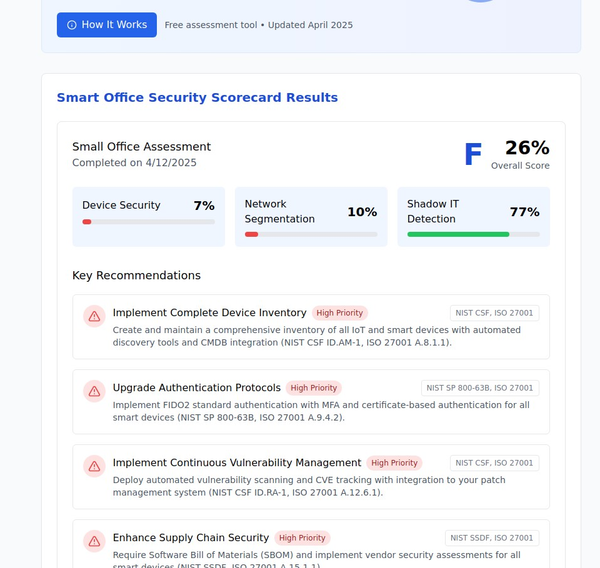Addressing Data Privacy Concerns in IoT: Strategies for Compliance

Introduction
The proliferation of Internet of Things (IoT) devices has revolutionized how we interact with technology, offering unprecedented convenience and efficiency. However, this rapid expansion also raises significant data privacy concerns. As IoT devices continuously collect and transmit vast amounts of personal data, ensuring compliance with data protection regulations like the General Data Protection Regulation (GDPR) becomes crucial. This article explores the growing concerns around IoT data privacy and provides actionable strategies for achieving compliance.
Privacy Implications of IoT: Data Protection and Consent in a Connected World
- Description: This document examines the privacy implications of IoT, focusing on data protection and the need for informed consent.
The Importance of Data Privacy in IoT
IoT devices, ranging from smart thermostats to wearable fitness trackers, generate a wealth of data, including personal information, behavioral patterns, and location data. This data can paint a comprehensive picture of an individual's life, making it a valuable target for cybercriminals. Ensuring data privacy is not just about protecting personal information but also about maintaining user trust and complying with stringent data protection regulations.
Considerations for Managing Internet of Things (IoT) Cybersecurity and Privacy Risks
- Description: This NIST publication provides comprehensive guidelines on managing cybersecurity and privacy risks in IoT environments.
Key GDPR Principles in the IoT Context
The GDPR provides a robust framework for protecting personal data, and its principles are particularly relevant in the IoT context. Here are some key GDPR principles and how they apply to IoT:
- Lawful Basis and Consent: Organizations must establish a lawful basis for processing personal data collected through IoT devices. Clear, specific, and informed consent must be obtained from individuals, allowing them to control their data[5][6].
- Data Minimization: IoT devices should only collect and process the data necessary for their intended purpose. Adopting a data minimization approach helps mitigate privacy risks and avoid the collection of excessive data[6].
- Security and Data Protection: Robust security measures, including encryption, access controls, and regular security audits, are essential to protect the personal data transmitted and stored by IoT devices. These measures prevent unauthorized access and data breaches[5][7].
- Transparency and Individual Rights: Organizations must provide clear and accessible information about the data collected, processed, and shared by IoT devices. Individuals have the right to access, rectify, and erase their personal data and to object to its processing in certain circumstances[6][8].
Guide to the General Data Protection Regulation (GDPR)
- Description: This guide from the ICO explains the provisions of the GDPR to help organizations comply with its requirements.
Strategies for Ensuring IoT Data Privacy and Compliance
1. Implement Strong Encryption and Authentication
Encryption is critical for securing data in transit and at rest. Organizations should use advanced encryption algorithms to protect sensitive information from interception and unauthorized access. Additionally, robust authentication mechanisms help verify the identities of connected devices, ensuring that only authorized devices can access the network[1][3].
2. Adopt Edge Computing
Edge computing processes data closer to the source, reducing latency and exposure to potential threats. This decentralized approach enhances data privacy and security by minimizing the amount of data transmitted to centralized servers[1][4].
3. Leverage Blockchain Technology
Blockchain technology can enhance the integrity and security of IoT data by creating immutable records of transactions. This distributed ledger technology helps establish trust among stakeholders and mitigates the risk of data tampering or manipulation[1].
4. Conduct Regular Security Audits and Updates
IoT devices often have limited processing capabilities, making them vulnerable to cyberattacks. Regular security audits and timely updates are essential to patch vulnerabilities and protect devices from the latest threats. Organizations should establish a patch management program to ensure updates are implemented promptly[2][3].
5. Educate Users and Promote Transparency
User empowerment through education is crucial in mitigating privacy risks. Organizations should promote awareness of privacy policies and the impact of data permissions. Providing users with clear information about data collection practices and offering options to manage consent effectively can build trust and enhance data privacy[2][6].
6. Develop a Comprehensive IoT Security Strategy
An effective IoT security strategy should integrate with the organization’s overall IT strategy and business plan. This strategy must cover every business area that uses the IoT network and include measures for continuous monitoring, incident response, and compliance with data protection regulations[3][7].
Conclusion
As IoT continues to expand, addressing data privacy concerns and ensuring compliance with regulations like GDPR is paramount. By implementing robust security measures, adopting innovative technologies, and promoting transparency, organizations can protect personal data, maintain user trust, and navigate the complex landscape of IoT data privacy. These strategies not only safeguard sensitive information but also foster a safer and more secure IoT environment.
By focusing on these key areas, your organization can effectively address data privacy concerns in IoT and achieve compliance with GDPR, ensuring the protection of personal data and the integrity of your IoT ecosystem.
Most Effective Strategies for GDPR Compliance in IoT
The Internet of Things (IoT) has brought about a significant transformation in how data is collected, processed, and utilized. While IoT offers numerous benefits, it also poses substantial challenges, particularly in terms of data privacy and compliance with regulations like the General Data Protection Regulation (GDPR). Here, we outline the most effective strategies for ensuring GDPR compliance in IoT environments.
1. Understand GDPR Requirements
A fundamental step towards GDPR compliance is a thorough understanding of the regulation's requirements. GDPR mandates that personal data must be processed lawfully, transparently, and for a specific purpose. Organizations need to ensure they have a lawful basis for data processing, obtain explicit consent from users, and provide clear information on data usage[2][4].
2. Implement Data Minimization
Data minimization is a core principle of GDPR, requiring that only the necessary data for a specific purpose be collected and processed. IoT devices should be configured to collect minimal data, thereby reducing the risk of data breaches and ensuring compliance with GDPR. This approach also helps in building user trust by demonstrating a commitment to privacy[4].
3. Enhance Data Security Measures
Robust data security measures are crucial for protecting the personal data collected by IoT devices. Implementing advanced encryption methods, secure authentication protocols, and regular security audits can help safeguard data against unauthorized access and breaches. Ensuring that IoT devices are regularly updated and patched is also essential to mitigate vulnerabilities[1][4].
4. Maintain Comprehensive Records of Data Processing
GDPR requires organizations to keep detailed records of data processing activities. This includes documenting what data is collected, how it is processed, where it is stored, and who has access to it. Maintaining these records not only helps in demonstrating compliance but also aids in identifying and addressing potential data protection issues promptly[1][5].
5. Conduct Regular Security Audits and Risk Assessments
Regular security audits and risk assessments are vital for identifying and mitigating potential threats to data privacy. These audits should evaluate the security posture of IoT devices, networks, and data processing activities. Conducting these assessments helps in ensuring that security measures are effective and up-to-date, thereby maintaining GDPR compliance[2][5].
6. Ensure Transparency and User Rights
Transparency is a key aspect of GDPR. Organizations must provide clear and accessible information to users about the data collected by IoT devices, how it is processed, and the purposes for which it is used. Additionally, users should be informed about their rights under GDPR, including the right to access, rectify, and erase their data. Implementing user-friendly interfaces for managing consent and data preferences can enhance transparency and compliance[4][5].
7. Leverage Advanced Technologies
Adopting advanced technologies such as blockchain and edge computing can enhance data privacy and security in IoT environments. Blockchain can create immutable records of data transactions, ensuring data integrity and transparency. Edge computing, on the other hand, processes data closer to the source, reducing latency and exposure to potential threats[1][2].
8. Educate and Train Employees
Employee education and training are critical components of a successful GDPR compliance strategy. Organizations should conduct regular training sessions to ensure that employees understand GDPR requirements and the importance of data privacy. This includes training on identifying potential security threats, handling personal data responsibly, and responding to data breaches[1][5].
Conclusion
Ensuring GDPR compliance in IoT environments requires a comprehensive approach that encompasses understanding regulatory requirements, implementing robust security measures, maintaining transparency, and leveraging advanced technologies. By adopting these strategies, organizations can protect personal data, maintain user trust, and navigate the complex landscape of IoT data privacy.
By focusing on these key areas, your organization can effectively address data privacy concerns in IoT and achieve compliance with GDPR, ensuring the protection of personal data and the integrity of your IoT ecosystem.
Citations:
[1] https://www.bulletproof.co.uk/blog/iot-and-gdpr-how-to-stay-compliant
[2] https://www.iottechexpo.com/2018/03/iot/gdpr-and-iot-5-aspects-of-a-successful-compliance-strategy/
[3] https://www.sciencedirect.com/science/article/pii/S1877050920321062
[4] https://www.linkedin.com/pulse/gdpr-internet-things-iot-safeguarding-privacy-connected
[5] https://www.techtarget.com/iotagenda/blog/IoT-Agenda/Mastering-IoT-compliance-in-a-GDPR-world
[6] https://www.researchgate.net/publication/313920099_Internet_of_things_data_protection_and_privacy_in_the_era_of_the_General_Data_Protection_Regulation
Citations:
[1] https://cybrpro.com/future-of-iot-data-security-trends-challenges/
[2] https://www.rinf.tech/privacy-concerns-and-data-protection-in-iot/
[3] https://www.fortinet.com/resources/cyberglossary/iot-best-practices
[4] https://community.trustcloud.ai/docs/grc-launchpad/grc-101/governance/data-privacy-in-the-age-of-iot-securing-connected-devices-in-2024/
[5] https://www.linkedin.com/pulse/gdpr-internet-things-iot-safeguarding-privacy-connected
[6] https://www.bulletproof.co.uk/blog/iot-and-gdpr-how-to-stay-compliant
[7] https://www.techtarget.com/iotagenda/tip/Fortify-security-with-IoT-data-protection-strategies
[8] https://www.pwc.co.uk/services/risk/technology-data-analytics/data-protection/insights/the-internet-of-things-is-it-just-about-gdpr.html




